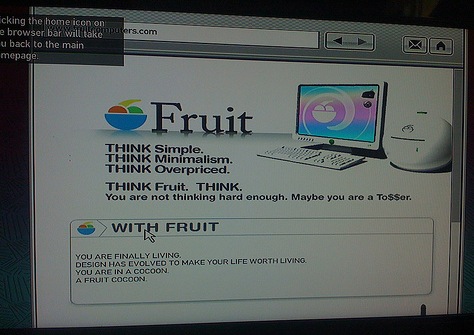It seems that every day there are new USB devices. Some are cool and some are not. I think that anyone that even has a little bit of geek in them will appreciate any of these. Some have practical uses and some are just fun, but all twenty of these gadgets are awesome.

1. Digital Photo Keychain:
I’m sure you’ve seen these cool devices. They can hold up to 35 pictures and you can download them right from your PC. Now you can have pictures of your kids, dog, girlfriend, or wife with you all the time. Just make sure that you don’t have your wife and your girlfriend on the same key chain.

2. Phone Book Cell Phone/ PC Flash Drive:
This handy device is great for maintaining and backing up your phone numbers on your cell phone. You can edit the phone book on your PC and upload it into your phone. Conversely, you can download phone numbers from your phone to your PC so you can have a backup in case something ever happens to your phone. This device can hold up to 10,000 different phone numbers and is compatible with Windows 98SE, Windows ME, Windows 2000, and Windows XP.

3. USB Beverage Warmer/ Cooler:
Keep your drinks warm or cold with this awesome beverage device. In addition, it doesn’t just link up to your computer. It’s also compatible with video game systems such as Xbox and Playstation and is even compatible with your cable box. You can use this gadget for keeping your coffee warm while you’re working during the day, keeping your soda cool while you’re playing your favorite video games in the evenings, and keeping your beer cold while watching sports on TV on the weekends.

4. Oscillating Fan:
This fan is great for warm offices and can either be stationary or can oscillate to circulate some air. It’s only 7 inches, so it will fit anywhere and is perfect for a desktop in your office.

5. Wireless mouse:
There are numerous wireless mice to choose from on the market these days, but it’s an awesome PC item that I think everyone should have. You never have to worry about the restraints of a corded mouse again. You also don’t have to worry about the cord rubbing against a surface so much that it eventually loses wire connection, which is a common problem that can occur over an extended period of time. The wireless mouse is compatible with Windows 98, Windows ME, Windows 2000, and Windows XP.

6. Flexible Keyboard:
This cool keyboard is not only spill-proof, but also water-resistant. You can actually run it under water to clean it! This is a great sanitary solution to keyboards that may sit out for months with crumbs from several meals and the oils from the skin of several different people.
Also, it’s made of high quality silicone, so you can bend it or roll it and it won’t damage the keyboard at all. The keyboard also has a soft and silent touch so you won’t hear that “tap-tap-tap” when you’re typing as you do with traditional keyboards. This keyboard is compatible with Windows Vista, Windows XP, Windows ME, Windows 2000, and Windows 98.

7. Battery Charger:
The USB battery charger holds either 2 AA batteries or 3 AAA batteries. This device contains two LED status lights and has an automatic off feature.

8. Pencil Sharpener:
The USB pencil sharpener can be useful at work or at home. It’s a perfect size for a desk as its dimensions are about 3 inches all the way around.

9. Missile Launcher:
This little gadget has no practical use, but it’s a lot of fun. It’s equipped with three foam missiles, pre-recorded sound effects, and missile software in the form of a CD. The missiles can really soar through the air and can shoot up to 20 feet away. This means that you could have a lot of fun at home and drive your pets crazy, or you can have even more fun at work and drive your coworkers crazy.

10. Pen/ MP3Player:
I’ve never seen as awesome a USB gadget as the pen/ MP3 player. It contains a 1GB or 512 MB flash drive, FM radio, built in microphone for voice recordings, and earphones. You get 7 hours of playing time, so it would be perfect to take to work. It’s compatible with Windows XP, 2000, ME and 98 SE operating systems as well as Mac and included in the package is a driver CD and the user’s manual. It’s pretty reasonably priced as the 512 MB version is under $50 and the 1 GB version is under $70.

11. USB Chess Board:
This awesome flexible chessboard is great for playing with a friend, by yourself versus the computer, or with online competitors. It’s great because you can roll it up and go. This gadget is compatible with Windows 2000 or Windows XP operating systems and you will need a 1.5 Ghz processor or faster.

12. Mini Humidifier:
This “cool” humidifier works for a full 45 minutes in its continuous mode or you can use it in its intermittent mode and it will run for 90 minutes. You can also pour scented oils in it for aromatherapy. This is a great device especially during those dry winter months.

13. Digital Microscope:
Okay, all you scientists. Here’s one that you’ll love. This innovative microscope can magnify up to 200 times without even changing lenses. It can attain images up at 1,024 x 768 pixels and also records video. It’s pricey, but worth it.

14. USB Basketball Game:
This awesome little basketball game is great to kill boredom at your work desk or great to play at home too. It’s only about 6 1/2 inches tall, so it’s practical for almost anywhere, despite what your boss might think.

15. USB Refrigerator:
Don’t worry. Your PC’s USB port isn’t going to be powering a 6-foot tall, bulky unit. This is a mini-fridge that will hold only one can of soda so that you can keep a soda cold and ready for you without even leaving your computer. The best part about this mini-fridge is that it only takes about 5 minutes to cool a soda down to 47 degrees Fahrenheit.

16. Wireless PowerPoint Presenter:
Do you prepare a lot of PowerPoint presentations at work? Are you tired of being tethered by a corded remote? Here’s your answer. This wireless presenter works from up to 10 meters away from the source and includes buttons for page up, page down, escape, and F5 (Presentation). It supports Windows 98SE, ME, 2000, XP, and Vista operating systems.

17. Heated Gloves:
This gadget is terrific if you share an office with others who insist on keeping the air conditioning cranked way up beyond your comfort level. These gloves with the holes in the fingers keep your hands warm and still allow you to work.

18. Roll-up Musical Keyboard:
I doubt you’ve seen anything like this. This 49-key flexible piano keyboard contains six different tones and 100 prerecorded rhythms. The keyboard rolls out to be a little less than 30 inches long, but rolls up into a convenient small package. This keyboard and software is compatible with Windows 2000, XP, and Vista operating systems.

19. Memory Watch:
Now you can carry all of your important data and files right on your wrist with this USB memory watch. This great gadget comes in a 2GB version and a 4GB version and it’s compatible with Windows 98, ME, 2000, XP, Linux 2.4 or higher, and Mac 8.6 or higher operating systems.

20. Digital Photo Frames:
These frames come in sizes that range from 2×2 to 8×10 and hold tons of pictures. They’re awesome for setting in your living room or on your desk at work. It’s something you can enjoy and other people will marvel. Though you’ll pay quite a bit, these frames are worth it.
So, what do you think of these gadgets? I’m certain that you’ve seen some of these before. Which ones most impress you? If you think these are impressive, just think about what the next generation’s technology has in store!
Original here

 and Buddy.tv
and Buddy.tv come to mind, but I can’t think of any major .me’s). For all of the hype surrounding these extensions at launch, they’ve largely failed to deliver.
come to mind, but I can’t think of any major .me’s). For all of the hype surrounding these extensions at launch, they’ve largely failed to deliver. “. In it, Dannen writes about the beginning of a new age of domain squatting, as ICANN (the organization that handles domain name registrations) begins accepting applications for new domain name suffixes. He posits that with the emergence of new extensions like “.nyc” or “.law” these squatters will be given a new lease on life, with a nearly endless number of possible domains to plunder. Legitimate companies, likewise, will have to register as many domains as they can in the hopes of fending off sites like “Microsoft.sux”.
“. In it, Dannen writes about the beginning of a new age of domain squatting, as ICANN (the organization that handles domain name registrations) begins accepting applications for new domain name suffixes. He posits that with the emergence of new extensions like “.nyc” or “.law” these squatters will be given a new lease on life, with a nearly endless number of possible domains to plunder. Legitimate companies, likewise, will have to register as many domains as they can in the hopes of fending off sites like “Microsoft.sux”. , and I can’t think of the last time I’ve directly entered a URL from an ad I heard on TV or the radio (I usually just type the company name into Google). Search engines generally do a better job at identifying the most authoritative sites in a space, and as they get smarter by paying more attention to user location and semantics, the bias for search engines over URLs will only become stronger.
, and I can’t think of the last time I’ve directly entered a URL from an ad I heard on TV or the radio (I usually just type the company name into Google). Search engines generally do a better job at identifying the most authoritative sites in a space, and as they get smarter by paying more attention to user location and semantics, the bias for search engines over URLs will only become stronger.



 )
)



























 We’ve got this from three independent sources close to Apple: expect a large screen iPod touch device to be released in the Fall of ‘09, with a 7 or 9 inch screen. Prototypes have been seen and handled by one of our sources, and Apple is talking to OEMs in Asia now about mass production.
We’ve got this from three independent sources close to Apple: expect a large screen iPod touch device to be released in the Fall of ‘09, with a 7 or 9 inch screen. Prototypes have been seen and handled by one of our sources, and Apple is talking to OEMs in Asia now about mass production.
